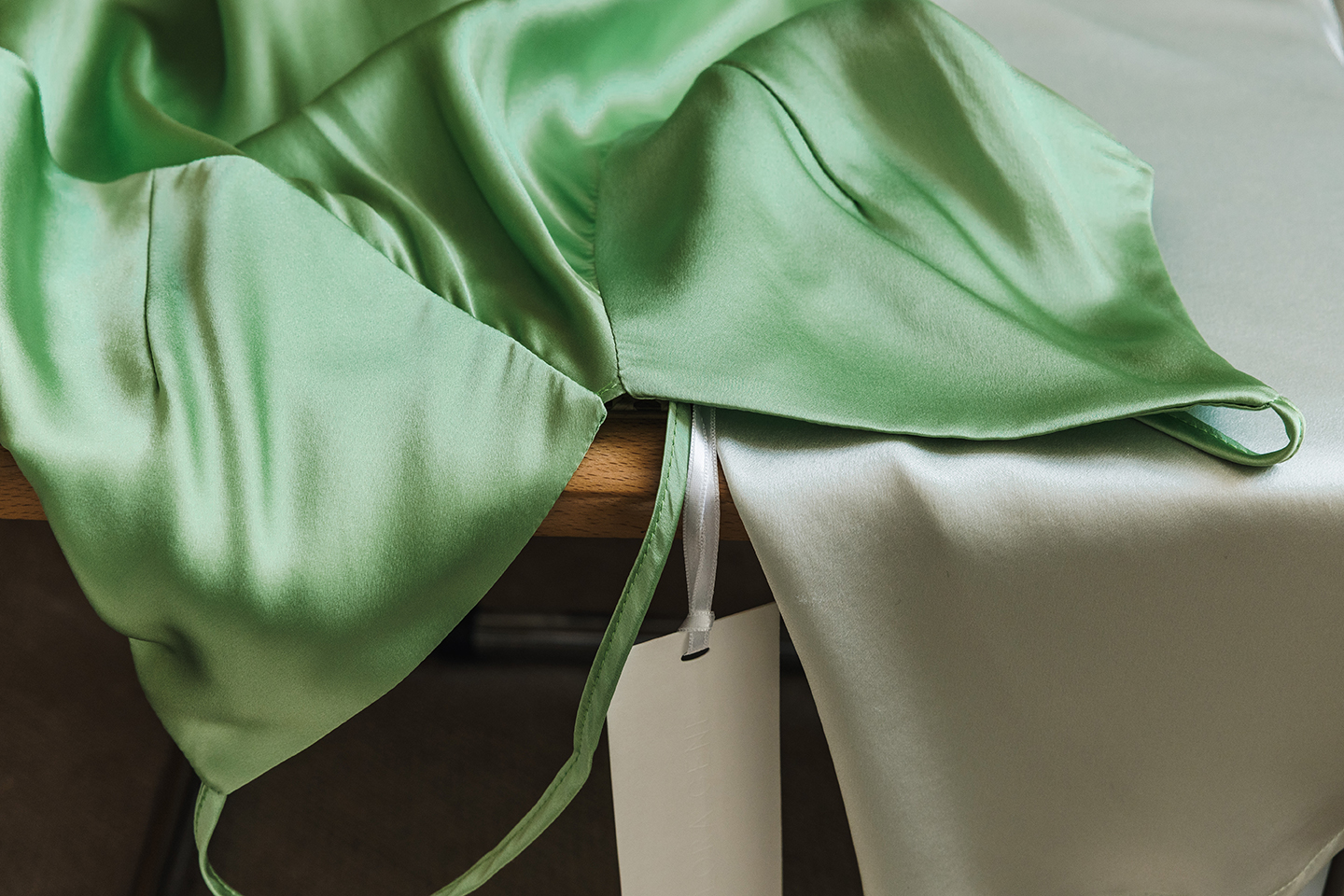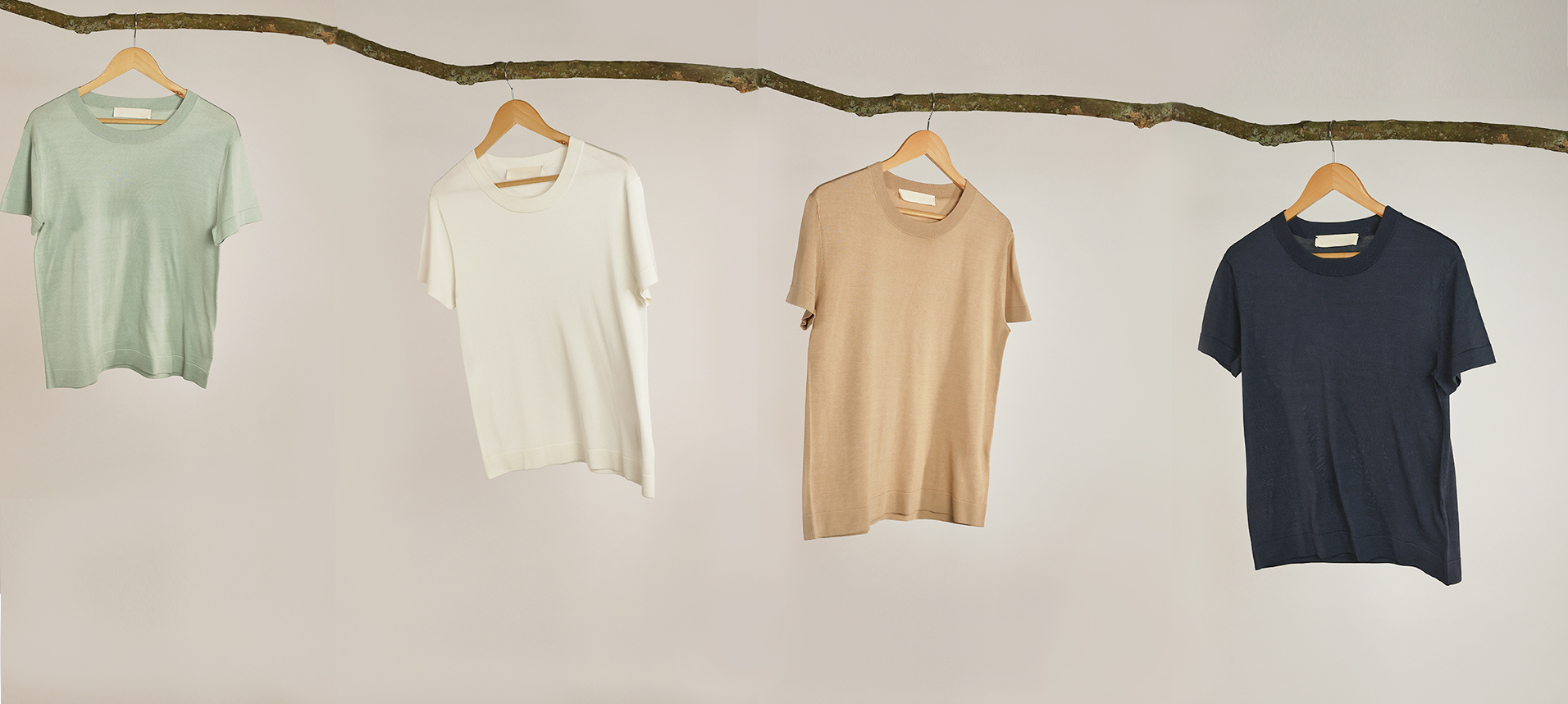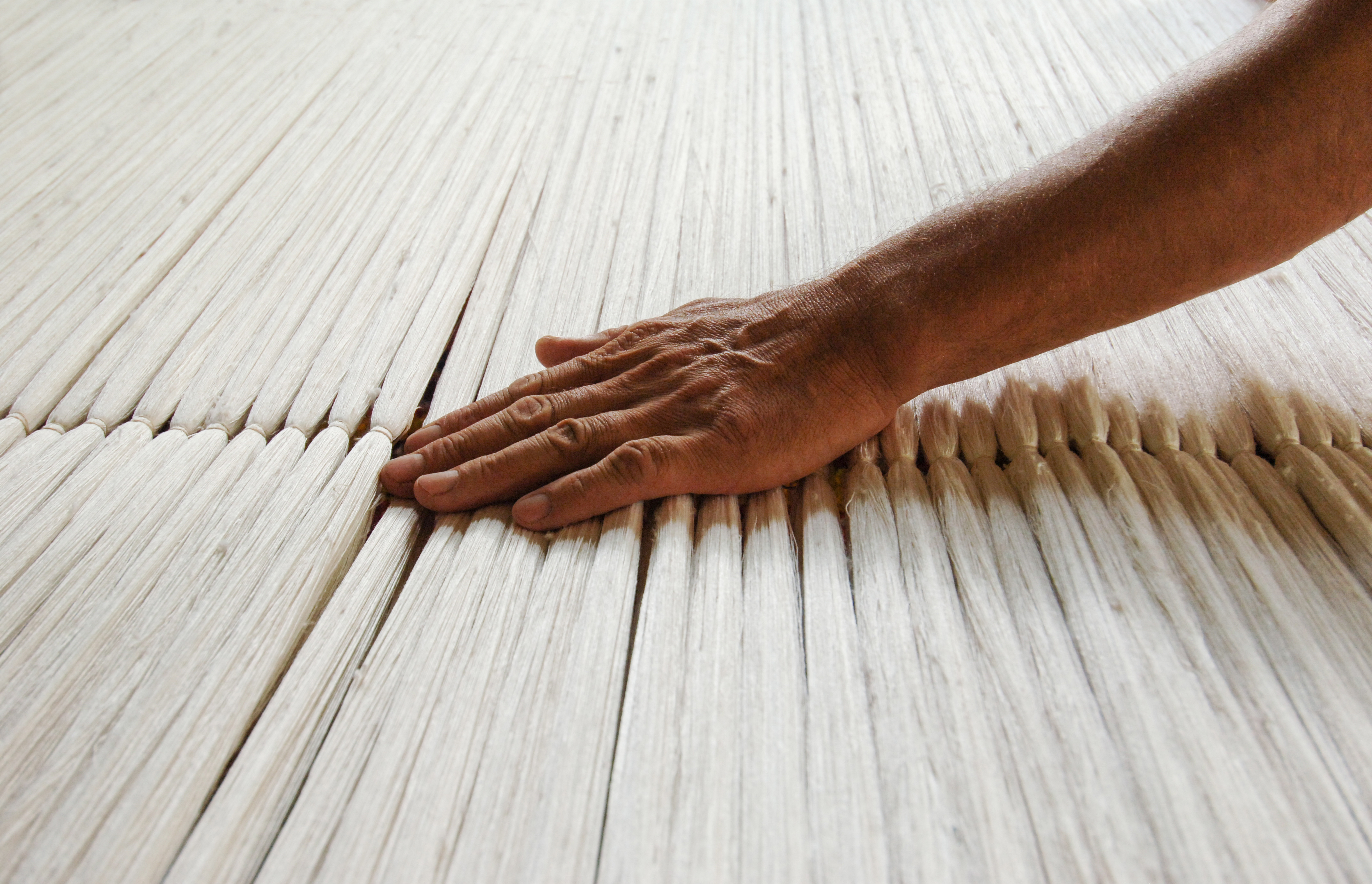Why do we choose Silk?


''I grew up in the age of polyester. When I got to touch real silk, cotton and velvet, the feel of non synthetic fabrics blew me away. I know it's important how clothing looks, but it's equally important how it feels on your skin.'' - Colleen Atwood
Silk fibres are making roughly 60% of our offering and we keep getting asked why are we so obssessed with this particualr fabric, so its time we tell you more about this incredible material that has been demonised for the sake of corporate interests.
Silk is like the strongest fibre of all natural textiles, known for its unbeatable strength. Sure, there are some lab-made materials giving it a run for its money lately, but silk still holds its own in the toughness department. But it's not just about strength. Silk's got that silky-smooth touch that people have been obsessed with for centuries. Silk's luxurious feel has captivated people for centuries, making it a significant player in trade and cultural exchange throughout history.
Silk fibres are composed primarily of fibroin, a protein produced by some types of insects. Today, the majority of the world's silk originates from the larvae of Bombyx mori, commonly known as silkworms, which feeds exclusively on mulberry leafs.


A short history
The cultivation of domesticated silk finds its roots in Ancient China. Archaeological findings trace the use of silk textiles in China back to 6500 BC, with evidence suggesting its utilization as early as 3600 BC.
The earliest documented mention of silk is inscribed on a bronze fragment discovered at the Shang Dynasty site in Anyang. Additionally, a small ivory cup featuring a carved silkworm design, unearthed in China, is estimated to be between 6000 and 7000 years old. According to Chinese legends, Lady Hsi-Ling-Shih, wife of the Yellow Emperor around 3000 BC, is credited with inventing silk production and the silk loom. Initially, silk was reserved for the Emperor and select elites, who wore white silk indoors and yellow silk outdoors.
Over the years, silk production flourished into a major industry in China, finding diverse applications from fishing lines and bowstrings to musical instruments. Initially, even documents were penned on silk cloth. Eventually, silk evolved into a coveted commodity, expanding its reach globally to regions like Byzantium, Persia, and later Italy, leading to the establishment of the renowned Silk Road. This trade route enabled the widespread distribution of silk to distant lands, granting people access to this luxurious fabric regardless of their proximity to silk cultivation and weaving hubs.


The main qualities of silk fibres
Silk fibers possess several distinctive qualities that make them trully marvellous;
- Strength: Silk is renowned for its exceptional tensile strength, making it the strongest natural fibre known to humans. This strength is attributed to the molecular structure of silk proteins, particularly fibroin.
- Luster: Silk has a natural sheen or luster that gives it a radiant appearance. This characteristic is due to the triangular prism-like structure of silk fibers, which reflects light at various angles, creating a shimmering effect.
- Lightweight: Despite its strength, silk is remarkably lightweight, even when woven in heavier weight fabrics, making it comfortable to wear and suitable for a variety of applications.
- Moisture-wicking: Silk has the ability to absorb moisture while still remaining dry to the touch, making it an excellent choice for garments in warm or humid climates.
These qualities combined make silk fibers highly desirable for a range of applications, including apparel, home textiles, and industrial uses. - Naturally hydrophobic- meaning it repels water. This property is due to the structure of silk proteins, which inherently resist water absorption.
- Antibacterial by nature -Silk has inherent antibacterial properties, attributed to its molecular structure and proteins like sericin.
- Antiviral properties-Recent research suggests that silk may have antiviral properties. A study published in the journal "ACS Biomaterials Science & Engineering" in 2020 found that silk fibroin demonstrated significant antiviral effects against the influenza virus by blocking viral attachment and entry into host cells.
- Thermoregulatory properties -widely recognized and studied in both academic and scientific contexts. Silk has the ability to adapt to the body's temperature, helping to keep you cool in hot weather and warm in cold weather. This makes silk not only a comfortable choice for clothing but for bedding throughout the year.


Is Silk a sustainable material?
That is a YES. If you actually dive deep into the processes of making silk and the natural abilities of that fiber, you might even argue it is THE most sustainable textile material. However, just like with all textiles, a lot of the processes that are required to improve efficiency and speed up production are now executed without sustainability at heart, and that is where we need to focus.
That said, silk makes up roughly 0.2% of the textile fibers made by humans, which is an extremely niche and small production. Just for a bit of perspective, polyester now makes about 70% of all textile fibers we produce. (Yes, it's that bad). And with that number in mind, silk has been truly demonized by big corporations, and though it is one of the very few textile fibers made via processes that are by nature carbon negative, it is still branded as "environmentally unfriendly." Silk is also often acussed of ''animal cruelty'' due to the killing of caterpillars during its production, interestingly the fact that billions more caterpillars are killed annually in the production of salads and tomatoes is never mentioned in that context. Furthermore, the Bombyx Mori, which has been domesticated for millennia and selectively bred in labs for silk production purposes, seems to take precedence in this narrative over naturally bred caterpillars killed to produce our vegetables. You might come across research that attempts to prove the sentience of Bombyx Mori, particularly one from the 1970s, which is inconclusive. However, you're unlikely to find similar research regarding the tomato hookworm killed in enourmous numbers, with pesticides.
As mentioned earlier, the Bombyx Mori (silkworm) exclusively feeds on mulberry leaves. However, due to over a millennium of domestication, it has become incredibly sensitive to chemicals and scents. Even the smell of tobacco can kill it. This means that mulberry orchards must be kept entirely free from soil enhancements and other industrial farming practices aimed at improving yields and efficiency. Consequently, silk production is carried out in small farms located in rural areas, which are often populated by some of the most vulnerable humans on the planet.
You are also very likely to find claims that silk production is very water intensive, energy consuming, and it involves slave labour, but we wholeheartedly urge to think why you won't easily find these claims when it comes to making polyesters, which are petroleum based fibres making, again nearly 70% of the textile fibres on the planet?
Prof. Veronica Kassatly has written very detailed series of articles on silk fibres which we strongly incourage you to read if you want to know more about silk.
A future-proof material
Silk fibers have been used for centuries, especially in medical applications like sutures. Nowadays, scientists are using silk to create various biomaterials such as gels, sponges, and films for medical purposes. By changing the chemical makeup of silk, they can alter its surface properties or make it work better for growing cells. They've also figured out how to tweak silk at a molecular level to give it special features like helping cells recognize each other or supporting mineralization. How fast silk breaks down depends on how it's made and its structure. Researchers have found that silk works well with cells both in lab tests and in real-life situations. It's been used successfully in wound healing and to help build different body tissues like bone, cartilage, and tendons.
In case you want to know more about the abilities of this ''ancient material of the future'' the work of Prof. Fiorenzo Omenetto is absolutely incredible
It's your choice whether you wear silk or not, but armed with knowledge, you can make an informed decision based on facts rather than empty claims designed to sell plastic fibers for profit. Silk is an incredible material that lasts for decades, and items made from silk can be passed down to the next generation if cared for properly.
You can check out our most popular silk dresses, in case you felt silk-y after this story
